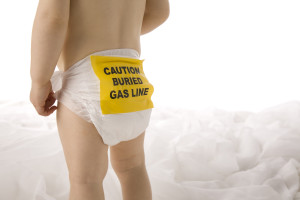All major American pediatric and health organizations strongly recommend breastfeeding babies for at least the first six months of life. The American Academy of Pediatrics, one of the preeminent authorities on such issues, recommends that babies be exclusively breastfed for the first six months and regularly breastfed for the first year or as long as it is comfortable for both mother and baby. There is abundant research showing that breastfeeding is the healthiest way to nourish an infant. And though formula can be good, the mother’s body naturally produces the right milk for the baby throughout the stages of early development.
Read MoreCategory: Bottle Feeding
The Pros and Cons of Pacifiers
For many new parents, the pacifier is a lifesaver. Not only is it quick and simple, but it also seems to do a better job of stopping the baby’s crying than virtually anything else. After hours of rocking, cuddling, and singing with no reprieve in the baby’s crying, having that pacifier on hand can be a great relief. Yet even though pacifiers work quite well for many children, there are some potential drawbacks that parents should be aware of. In the end, pacifiers are great as a short-term solution to baby’s crying, but they should be used with caution.
Step-By-Step Weaning for a Healthy Baby
The American Academy of Pediatrics recommends that mothers continue to breastfeed their babies throughout the first year of life. This is a great goal, and mothers who can achieve it should be proud. However, the fact is that a variety of factors tend to get in the way. Work and other responsibilities can be disruptive to the breastfeeding routine, and in many cases babies may voluntarily give up the breast before reaching that one-year point.
Read MorePacifiers
Dummies, pacifiers, comforters or soothers have been used by mothers for centuries to soothe and calm their babies. There is a dummy debate that has been going for a long time as whilst there are some parents who feel they couldn’t live without them, there are other parents who detest them.
Read MoreSome Bottle Feeding Facts
At some point most mothers bottle feeding their babies will experience some kind of problem. Most are easy to resolve but any major concerns should be addressed to your doctor. A common problem is not enough air entering the bottle after the baby has sucked out some of the milk. It causes a problem because the air is needed to balance the pressure inside the bottle. Air enters through the holes in the end of the nipple or between the nipple ring and the bottle. There are some orthodontic nipples that have extra holes at the nipple base (near the nipple ring). If the nipple ring is screwed on too tightly to the bottle and your baby’s tongue is covering and making a seal over the nipple holes you will probably have difficulty bottle feeding. Try loosening and tightening the nipple ring to see if this helps. When there is a continuous and steady flow of bubbles entering the bottle when baby drinks then you have got it right.
Read MoreIron: Making Sure Your Baby Gets It
What to Eat When Breastfeeding
By Lisa Pecos
During pregnancy, new moms have to worry about everything they put into their bodies. And while there are many ideas about what is best for a developing baby when it is in the womb, there is widespread agreement about the things that definitely should be avoided and what foods are healthy for the unborn child. But when it comes to post-birth health, the answers are not so clear-cut. The good news is that if you just eat healthy you should be fine, but there are additional concerns to keep in mind.
Read MoreWhen to Wean Baby
Weaning really begins from the time additional nourishment apart from breast milk or formula is given to baby. It is a process rather than an event. There is no best time to wean baby. Most mothers do it when it suits them and their child. Babies are usually started on solids at around six months. As the baby gets older, he or she will want more solid food and often the need for milk then diminishes over a period of time. Read More
Tips for Bottle-Feeding Your Baby
Not everyone can breastfeed-feed their baby and bottle feeding is an accepted substitute, so the new mother should not feel guilty if she is unable – or chooses not – to breastfeed. It will certainly cost more to buy the formula, bottles and teats and the sterilizing gear, but baby must be fed.
Bottle feeding today is much easier than it was years ago when the milk and bottles had to be both boiled to give baby a safe feed. And the milk frequently boiled over, making a big mess all over the stove top. Today you simply use boiled water, add powdered formula and give it a good shake. Gran would be jealous!
Read MoreThe 411 on Baby Gas Problems

Many babies seem to be disturbed by abdominal gas; they either ingest bubbles of air while feeding or gas forms in the gut as bacteria breaks down undigested sugars. When this problem is really bad it is usually called colic. Two things can contribute to the problem of gas – fast feeding and failure to burp halfway between the feed and after completion. Read More